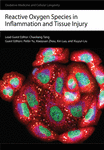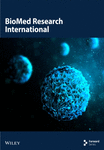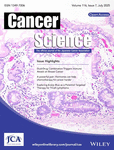Journal list menu
Export Citations
Download PDFs
Retraction
Open Access
oa
RETRACTION: Nanoscale Modification of Titanium Implants Improves Behaviors of Bone Mesenchymal Stem Cells and Osteogenesis In Vivo
- First Published: 08 July 2025
Research Article
Open Access
oa
The Protective Role of Hydrogen Sulfide and Its Impact on Gene Expression Profiling in Rat Model of COPD
- First Published: 18 March 2022
Research Article
Open Access
oa
Sevoflurane Improves Hemorrhagic Shock and Resuscitation-Induced Cognitive Impairments and Mitochondrial Dysfunctions through SIRT1-Mediated Autophagy
- First Published: 11 March 2022
Research Article
Open Access
oa
The lncRNA-AK046375 Upregulates Metallothionein-2 by Sequestering miR-491-5p to Relieve the Brain Oxidative Stress Burden after Traumatic Brain Injury
- First Published: 16 February 2022
Research Article
Open Access
oa
miRNA-22 Upregulates Mtf1 in Dorsal Horn Neurons and Is Essential for Inflammatory Pain
- First Published: 10 February 2022
Research Article
Open Access
oa
Changes of Functional, Morphological, and Inflammatory Reactions in Spontaneous Peripheral Nerve Reinnervation after Thermal Injury
- First Published: 01 February 2022
Research Article
Open Access
oa
Peroxiredoxin-5 Knockdown Accelerates Pressure Overload-Induced Cardiac Hypertrophy in Mice
- First Published: 29 January 2022
Review Article
Open Access
oa
A Common Feature of Pesticides: Oxidative Stress—The Role of Oxidative Stress in Pesticide-Induced Toxicity
- First Published: 19 January 2022
Research Article
Open Access
oa
Nanoscale Modification of Titanium Implants Improves Behaviors of Bone Mesenchymal Stem Cells and Osteogenesis In Vivo
- First Published: 04 January 2022
Research Article
Open Access
oa
Mangiferin Inhibits PDGF-BB-Induced Proliferation and Migration of Rat Vascular Smooth Muscle Cells and Alleviates Neointimal Formation in Mice through the AMPK/Drp1 Axis
- First Published: 03 December 2021
Research Article
Open Access
oa
CaMK II Inhibition Attenuates ROS Dependent Necroptosis in Acinar Cells and Protects against Acute Pancreatitis in Mice
- First Published: 17 November 2021
Research Article
Open Access
oa
Irisin Rescues Blood-Brain Barrier Permeability following Traumatic Brain Injury and Contributes to the Neuroprotection of Exercise in Traumatic Brain Injury
- First Published: 16 October 2021
Research Article
Open Access
oa
Rosiglitazone Suppresses Renal Crystal Deposition by Ameliorating Tubular Injury Resulted from Oxidative Stress and Inflammatory Response via Promoting the Nrf2/HO-1 Pathway and Shifting Macrophage Polarization
- First Published: 14 October 2021
Research Article
Open Access
oa
The DNA Repair Enzyme XPD Is Partially Regulated by PI3K/AKT Signaling in the Context of Bupivacaine-Mediated Neuronal DNA Damage
- First Published: 07 October 2021
Research Article
Open Access
oa
XIST Inhibition Attenuates Calcium Oxalate Nephrocalcinosis-Induced Renal Inflammation and Oxidative Injury via the miR-223/NLRP3 Pathway
- First Published: 02 September 2021
Review Article
Open Access
oa
Cognitive Dysfunction after Heart Disease: A Manifestation of the Heart-Brain Axis
- First Published: 18 August 2021
Research Article
Open Access
oa
TMIGD1 Inhibited Abdominal Adhesion Formation by Alleviating Oxidative Stress in the Mitochondria of Peritoneal Mesothelial Cells
- First Published: 14 August 2021
Research Article
Open Access
oa
OC-STAMP Overexpression Drives Lung Alveolar Epithelial Cell Type II Senescence in Silicosis
- First Published: 14 August 2021
Research Article
Open Access
oa
Deficiency of ROS-Activated TRPM2 Channel Protects Neurons from Cerebral Ischemia-Reperfusion Injury through Upregulating Autophagy
- First Published: 28 July 2021
Research Article
Open Access
oa
Escherichia coli Aggravates Calcium Oxalate Stone Formation via PPK1/Flagellin-Mediated Renal Oxidative Injury and Inflammation
- First Published: 13 July 2021






